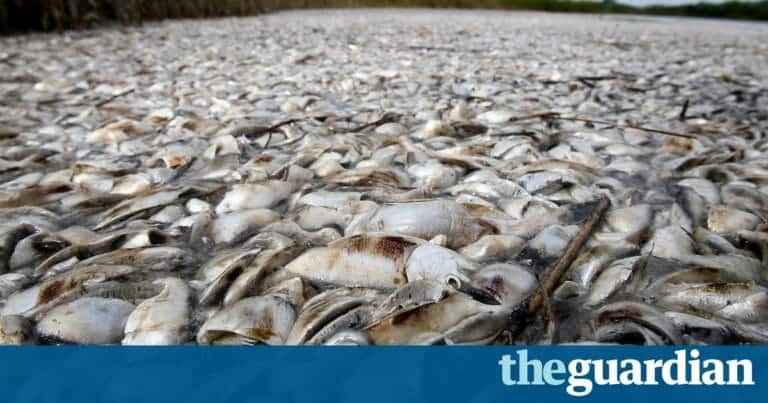The global meat industry, already implicated in driving global warming and deforestation, has now been blamed for fueling what is expected to be the worst “dead zone” on record in the Gulf of Mexico. Toxins from manure and fertiliser pouring into waterways are exacerbating huge, harmful algal blooms that create oxygen-deprived stretches of the gulf, the Great Lakes and Chesapeake Bay, according to a new report by Mighty, an environmental group chaired by former congressman Henry Waxman.
It is expected that the National Oceanic and Atmospheric Administration (NOAA) will this week announce the largest ever recorded dead zone in the Gulf of Mexico. It is expected to be larger than the nearly 8,200 square-mile area that was forecast for July – an expanse of water roughly the size of New Jersey.
Nutrients flowing into streams, rivers and the ocean from agriculture and wastewater stimulate an overgrowth of algae, which then decomposes. This results in hypoxia, or lack of oxygen, in the water, causing marine life either to flee or to die. Some creatures, such as shrimp, suffer stunted growth. Algal blooms themselves can cause problems, as in Florida last summer when several beaches were closed after they […]
Full article: Meat industry blamed for largest-ever ‘dead zone’ in Gulf of Mexico
More about toxic algae and algal blooms:
- Final call to save the world from ‘climate catastrophe’
- NOAA: 40% of Lake Okeechobee covered in harmful algae
- Warming drives spread of toxic algae in US, researchers say
- Two Factors Increasing the Risk of Harmful Algal Blooms (HABS)
- Attack of the Killer Algae
- ‘Fecal Soup’: Wisconsin Well Water Would Horrify You
Also see: The Science Behind Atmospheric Rivers



